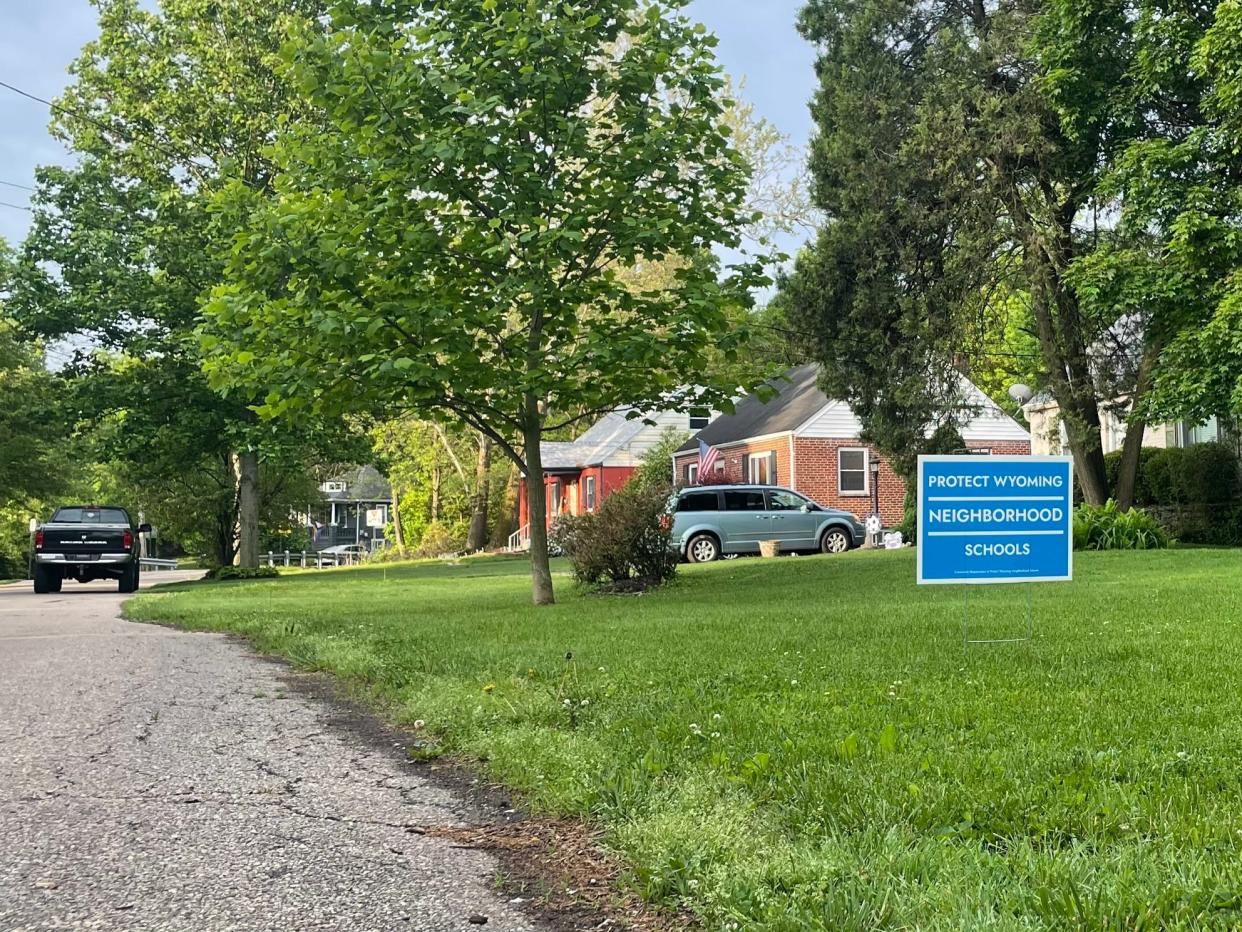Some Ohio districts weigh centralized 'grade-banded' schools. What are the pros and cons?

Consolidating schools is never easy and rarely initially popular among residents − just ask the parents in Wyoming City Schools.
When district administrators shared a potential plan that would close one elementary building and band grade levels together among the other two, parents showed up to meetings, created a Facebook group and sent fliers around town.
Facilities update: Is Wyoming City Schools closing an elementary school? Community asks for transparency
A similar story unfolded in the Talawanda School District community last school year. Talawanda's school board ended up turning down the cost-saving idea to switch to grade banding and still has three neighborhood elementary schools that each serve students in K-5.
But other school districts in the area − including nearly all of the public schools in Warren County − use the banding system. Hamilton County's Loveland City Schools has an early childhood center serving preschoolers and kindergartners; Loveland Primary School for students in grades 1-2; Loveland Elementary School for grades 3-4; and Loveland Intermediate School for grades 5-6. That district consistently ranks high among Ohio's public school systems, and was one of 11 districts in the region to earn a five-star overall report card rating from the state this year.
Districts strapped for cash: School funding issues are 'tearing communities apart,' Ohio superintendent says. What now?
Wyoming's leaders haven't yet decided what to do next. Administrators aren't set on the plan to close Elm Elementary and are still collecting community feedback.
What are the main differences, advantages and disadvantages of banding grade levels vs. keeping neighborhood schools? The Enquirer talked to Lena Lee, Miami University's primary education program coordinator in the department of teaching, curriculum, and educational inquiry to find out.
Banding schools: What is it? And what are its advantages?
Banding refers to containing students who are at the same grade level to one school or sometimes even one classroom. This can be done in several different ways, and moving to a banded model doesn't necessarily mean reducing the number of school buildings.
Districts might band grade levels together in several separate school buildings, like in Loveland. Or, they might place everyone together in one large school building that serves students in K-6 or more grade levels. Winton Woods City Schools follows this model.
Students in banded schools have the advantage of knowing everyone in their grade from early on, Lee said. It helps to build community.

Teachers in banded schools can try new curriculum more easily and work together to solve classroom problems. They can also regulate classroom sizes, whereas in neighborhood schools you might see an incoming class of 17 kindergartners at one school and 25 at another. Overall, banded schools offer more flexibility, Lee said.
But Lee said for her, the biggest advantage to banded schools is that the model is more equitable and promotes diversity. It helps rid students of the "labeling" that often comes with neighborhood schools, if one of the buildings is associated with immigrant families, for example.
What's the case for neighborhood schools?
Parents and teachers can more easily chart growth and development of students who stay at one school for longer, Lee said.
Neighborhood elementary schools typically house students for at least five years in a row. In that model, parents and students can keep relationships with teachers for longer and get advice even as a student moves on to the next several grade levels.
There's also a stronger sense of community among the different grade levels in neighborhood schools, especially when older students can interact with and help the younger kids. Students who move through several different banded schools before getting to high school might never feel a real sense of belonging like they could in a neighborhood school, Lee said.
"Younger children moving a lot, one (school) to another, they're sometimes losing themselves. 'I don't know where I am. And I'm going to leave anyway, within two years,'" she said.
Are there any trends lately with schools moving toward one model or the other?
Lee said she's noticed several districts moving toward the banded model − specifically banding all students into a single campus for K-8 − for cost-saving reasons.
Lee isn't convinced districts are going that way because it's best for kids. Rather, it's best for balancing a budget. But, she does see the advantage for parents who could benefit from a single morning drop-off spot, or maximum two stops. When districts band grade levels at different buildings for grades K-1, 2-3, 4-5 and have separate middle and high schools, a family with five kids could need to make five stops every morning.
How does the banded model save districts money?
When schools switch to a banded model, some administrators say all of the programs for students will stay the same. That's rarely true, Lee said.
"That is really not possible," she said. "Many times they want to cut those resources and staff members. So that means students who are gifted, talented or they really need some more extra help, those students are really having a disadvantage."
If a school district does drop a school building in the switch, it saves money on taxes, too.
Which communities thrive most with banded grade levels? With neighborhood schools?
Lee said school communities serving a significant amount of families in poverty would likely benefit from the banded model, to "try to get rid of that labeling."
Some larger communities, though, might not be able to house all students of one age group in one building. Cincinnati Public Schools, for example, serves nearly 36,000 students. It would be impossible to fit all of the district's kindergartners into one building, and the city is so large that there wouldn't be a location ideal for all of those families.
Is walkability a good argument for keeping neighborhood schools?
Probably not, Lee said.
So few families actually walk to school nowadays, Lee said. And in many communities, even if a school is in walking distance, there isn't a pedestrian pathway that's safe for kids.
Walking to school is more of a nostalgia factor for some parents than an actual current possibility, Lee said. If walking is a priority to a community, she thinks it's best to then focus on making the environment more pedestrian-friendly so all of a system's schools are accessible by walkers.
She did say Wyoming City Schools is a special case since the village is known for its walkability and the schools are very far apart.
What other structures are there for elementary buildings?
A single-campus district is another approach, Lee said. Perhaps there are different buildings next to each other or different wings in the same building that house different grade levels.
This structure makes it easier to personalize each student's education. Students who are ahead in a certain subject could walk to an advanced class at the high school, for example. Also, all special services would be accessible on one campus.
Kids of different ages can still interact in this setting, she said, and teachers can communicate and collaborate with one another as much as they please.
"That is pretty ideal," Lee said.
This article originally appeared on Cincinnati Enquirer: Is banding grade levels or neighborhood schools better?

